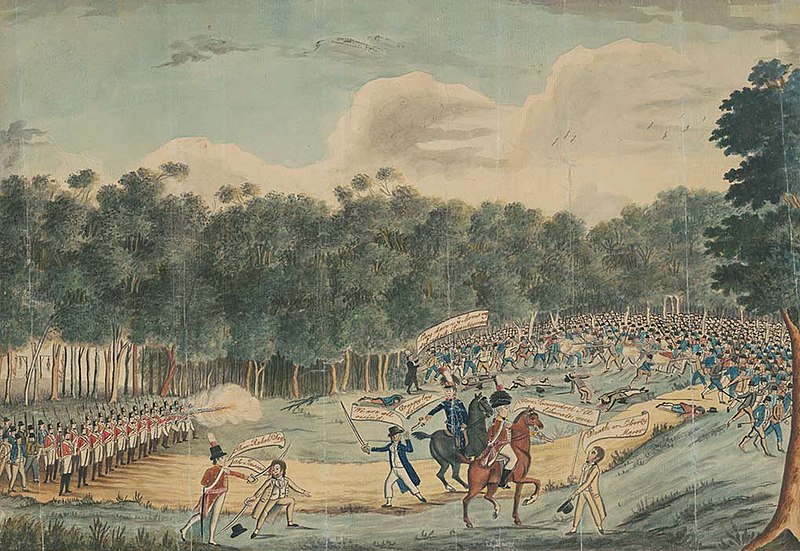In the wake of the 1789 French revolution, and fearing the influence of radical dissenters, Britain began transporting political prisoners to Port Jackson.
The Irish Rebellion of 1798 saw an insurrection against the British Crown, primarily organised by The Society of United Irishmen. The Society sought to secure a republic through a revolutionary union with the country’s Catholic majority. Assistance to the Irish rebels was provided by the French Republic who provided land and naval assistance. Major battles were fought, one of the most infamous being the Battle of Vinegar Hill, where rebels were crushed by British forces. In the wake of the rebellion, which ended on 12 October 1798, Irish Catholic prisoners were branded as “politicals” and exiled for life to Port Jackson.
On 8 July 1801, Governor King established the Third Government Farm at Castle Hill. The majority of the convicts who worked at the farm were exiled Irish Catholics. In 1804, Irishmen Philip Cunningham (a veteran of the 1798 rebellion) and William Johnston (mutineer on the convict transport ship Anne) planned to overtake Parramatta and Port Jackson, establish Irish rule and return willing convicts to Ireland.
As darkness fell on 4 March 1804, a hut at Castle Hill Government Farm was set alight as a signal to begin the uprising. Around 300 convicts overpowered their guards and took supplies and munitions. The group was split into smaller parties and were sent to raid nearby farmhouses. However, many became lost during the night and did not return to the rendezvous point just outside of Parramatta, reducing the convict force.
Alerted to the rebellion late in the evening, Governor King declared martial law and Major George Johnston of the New South Wales Corps organised troops and civilian volunteers from the Sydney settlement to pursue the convicts.
Major Johnston, trooper Thomas Anlezark and Father Dixon (a Catholic priest), riding ahead of the troops, attempted to convince the rebels to surrender. While negotiating under a flag of truce, Cunningham was arrested. The Colonial troops then charged, and the rebellion was suppressed on 5 March 1804.
Martial law was revoked a week after the battle. An estimated 39 convicts died in, or as a result of, the uprising. As a result, nine of the rebel leaders were hanged without trial, seven convicts were sentenced to between 200 and 500 lashes, and another 23 rebels were banished to the Coal River (Newcastle) chain gang.
The first uprising in the newly established colony of Port Jackson was defeated and hailed by loyalists as the Colony’s Vinegar Hill.
Pictorial Postmark
A pictorial postmark was released on 14 September 1984 at Castle Hill. The postmark commemorated the 180th Anniversary of the Castle Hill Rebellion.



